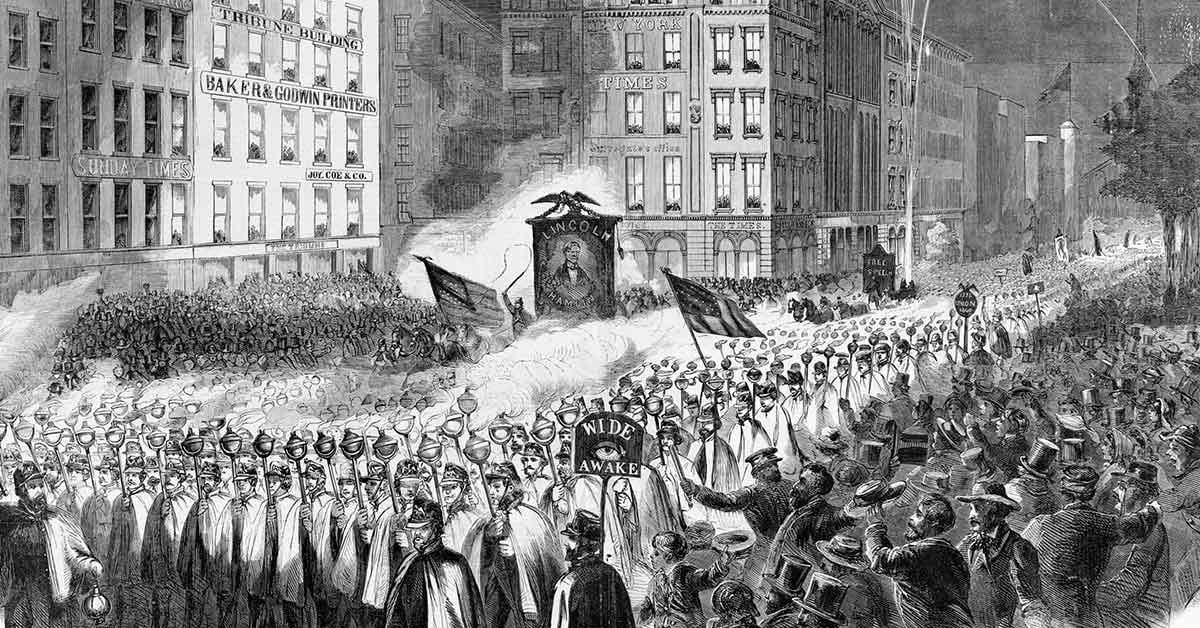Welcome to 19th Century, where we delve into the fascinating world of the past. Join us as we explore the revolutionary era of textile factories in the 19th century, shaping industries and transforming societies one thread at a time. Step into the past and uncover the hidden stories behind these powerhouses of progress.
The Rise of Textile Factories in the 19th Century: The Industrial Revolution’s Impact on Textile Production
The rise of textile factories in the 19th century was a significant development that reshaped textile production during the Industrial Revolution. Prior to this era, textile production was primarily carried out in small-scale cottage industries, with individual craftsmen and women working from their homes.
However, with the advent of new technologies and machinery, there was a shift towards centralized production in large factories. These textile factories were characterized by the use of water and steam-powered machinery, which greatly increased efficiency and output. This transition led to a dramatic increase in textile production, as well as a decrease in costs.
One of the key factors behind the rise of textile factories was the invention of the spinning jenny by James Hargreaves in 1764. This machine allowed one operator to spin multiple threads simultaneously, vastly increasing productivity. Similarly, the invention of the power loom by Edmund Cartwright in 1785 revolutionized the weaving process.
The Industrial Revolution also brought about changes in labor patterns. As textile factories expanded, there was a growing demand for a large and reliable workforce, which led to the migration of rural workers to urban areas. These workers often endured harsh working conditions and long hours, with the factory system emphasizing discipline and efficiency.
Moreover, the rise of textile factories had far-reaching social and economic consequences. It spurred urbanization and the growth of industrial cities, such as Manchester in England. The concentration of production in factories also led to the emergence of a new class of industrial capitalists who accumulated wealth and power.
The rise of textile factories in the 19th century was a pivotal development during the Industrial Revolution. It transformed textile production by introducing new technologies and machinery, leading to increased efficiency and output. However, it also had profound societal and economic implications, shaping labor patterns and contributing to urbanization and the rise of industrial capitalism.
Watch How Clothes Are Made | Full Production Process
Could You Make a Living in Medieval London?
What was the textile industry like in the 19th century?
The textile industry in the 19th century experienced significant advancements and transformations. Industrialization played a crucial role in shaping the industry during this period.
Technological innovations such as the spinning jenny, power loom, and cotton gin revolutionized the production process. These inventions facilitated mass production, increased efficiency, and reduced costs.
The mechanization of textile manufacturing led to the establishment of large-scale factories and the concentration of workers in urban areas. This shift from cottage industry to factory-based production brought about significant social and economic changes.
Women and children constituted a significant portion of the textile industry workforce during the 19th century. They worked long hours in harsh conditions for meager wages, often facing exploitation and low living standards.
Trade unions emerged as workers sought to improve their working conditions and wages. Strikes and protests became common as labor movements fought for better rights and representation.
The textile industry became a driving force behind the Industrial Revolution, particularly in countries like the United Kingdom and the United States. It fueled economic growth, expanded trade networks, and contributed to technological advancements in transportation and communication.
Moreover, the demand for textiles increased with the rise of consumerism and expanding global markets. With the advent of steamships and railways, textiles could be transported faster and more efficiently, enabling international trade and colonization.
The 19th-century textile industry witnessed remarkable changes due to industrialization and technological advancements. These developments shaped the way textiles were produced, distributed, and consumed, ultimately contributing to the transformation of societies and economies.
During the 19th century, where was the US textile industry located?
During the 19th century, the US textile industry was primarily located in New England, particularly in states like Massachusetts, Rhode Island, and Connecticut. New England became a hub for textile manufacturing due to its access to natural resources like water power and raw materials such as cotton and wool. The region’s fast-flowing rivers provided an abundant source of energy for factories, and its proximity to major ports facilitated trade and transportation of finished goods. Industrial cities like Lowell, Massachusetts, were at the forefront of this industry, with numerous textile mills and factories operating in the area. The growth of the textile industry in New England during this period played a significant role in the economic development and industrialization of the United States.
Which city was renowned for its textile mills during the 19th century?
Manchester was renowned for its textile mills during the 19th century.
What were the textile factories referred to as?
In the 19th century, textile factories were commonly referred to as mills. These mills played a significant role in the industrial revolution by mass-producing textiles through mechanized processes. They were often powered by water or steam engines and employed a large number of workers, including women and children. The development of these mills revolutionized the textile industry, leading to increased production and efficiency during this period.
Frequently Asked Questions
What were the working conditions like in 19th century textile factories?
In the 19th century, the working conditions in textile factories were often harsh and hazardous. Workers, including women and children, toiled long hours in crowded and poorly ventilated factories. They faced frequent exposure to dangerous machinery, which resulted in numerous accidents and injuries.
The workdays in textile factories were typically 12-16 hours long, six days a week. Workers had limited breaks, often only for meals, and were subject to strict discipline by their employers. The constant noise, dust, and chemical fumes in the factories also posed health risks to the workers.
Factory owners aimed to maximize profits and were often indifferent to the well-being of their workers. They would cram as many machines and workers as possible into the limited space, leading to overcrowding and an increased risk of accidents. Safety measures were inadequate or nonexistent, and workers had little to no recourse if they were injured on the job.
Child labor was prevalent in textile factories during this time. Children as young as 8 years old were employed to perform various tasks, such as cleaning machines, working as doffers, or even operating machinery. These children endured physically demanding work in dangerous conditions, leading to stunted growth, deformities, and other long-term health issues.
Overall, the working conditions in 19th-century textile factories were unhealthy, dangerous, and exploitative. It wasn’t until the emergence of labor unions and subsequent labor reforms that significant improvements were made to protect workers and regulate factory conditions.
How did the development of textile factories impact the lives of workers in the 19th century?
The development of textile factories in the 19th century had a significant impact on the lives of workers. Industrialization brought about by these factories transformed the way textiles were produced, leading to major changes in the working conditions and experiences of workers.
Firstly, the establishment of textile factories created a large demand for labor. This resulted in a mass influx of workers, especially from rural areas, seeking employment opportunities in the expanding factories. Many workers left their traditional agricultural livelihoods to join the industrial workforce in search of better wages and economic opportunities.
However, working conditions in textile factories were often harsh and unsafe. Workers, including men, women, and children, typically faced long hours of labor, ranging from 12 to 16 hours a day, six days a week. They were subjected to monotonous and repetitive tasks, such as operating machinery or tending to weaving looms, which could be physically exhausting.
Furthermore, the factory environment was often hazardous. The machines posed significant dangers, and workers frequently suffered from accidents, injuries, and even death. Unsafe working conditions were prevalent, with inadequate safety regulations and minimal worker protection.
The low wages paid to workers in textile factories meant that many struggled to make ends meet. Poverty and poor living conditions were common among this labor force. In addition, the rapid urbanization caused by the concentration of factories led to overcrowded and unsanitary living conditions in factory towns and cities.
Despite these challenges, the development of textile factories also offered opportunities for social mobility. As industrialization progressed, skilled workers had the chance to advance to higher positions, such as machine operators or overseers. This promoted a new social class of factory owners and managers, contributing to the emergence of a middle class.
Overall, the development of textile factories had a profound impact on the lives of 19th-century workers. While it provided employment opportunities and potential social mobility for some, it also exposed workers to harsh and dangerous working conditions, low wages, and poor living standards. These conditions ultimately fueled the labor movement and the fight for workers’ rights in the following decades.
What role did women play in 19th century textile factories and how did it affect their social and economic status?
In the 19th century, women played a significant role in textile factories, particularly in Europe and North America. Their employment in these factories had a profound impact on their social and economic status.
Women were often hired as low-skilled workers in textile factories, performing tasks such as spinning, weaving, and sewing. They worked long hours, often in harsh conditions, and received minimal pay. Their labor was crucial to the growth of the textile industry during this period.
Their work in factories challenged traditional gender roles and expectations. Prior to industrialization, women’s primary role was associated with domestic work and child-rearing. Factory employment provided an opportunity for women to escape the confines of their homes and participate in the public sphere.
However, despite their contribution to the textile industry, women faced numerous challenges and discrimination. They were subjected to lower wages compared to male workers and often experienced unsafe working conditions. Additionally, factory work disrupted traditional family dynamics and had a significant impact on women’s ability to fulfill their domestic responsibilities.
Despite these challenges, factory work also provided some women with newfound independence and economic power. For many, the ability to earn a wage allowed them to gain a degree of financial autonomy. Some women used their earnings to support their families or save for their future. This newfound economic agency enabled women to have more control over their lives and challenge societal norms.
Overall, women’s participation in 19th-century textile factories revolutionized their social and economic standing. While it exposed them to exploitation and discrimination, it also provided opportunities for empowerment and economic independence. The experiences of women in textile factories during this era paved the way for future advancements in women’s rights and the fight against gender inequality.
The 19th century textile factories played a pivotal role in shaping the industrial landscape of the time. These powerhouses of production ushered in a new era of manufacturing, fueled by advancements in technology and a growing demand for textiles. However, the rise of these factories also came at a cost. The harsh working conditions endured by factory workers, often including long hours, low wages, and unsafe environments, highlighted the darker side of industrial progress. Nonetheless, the impact of these textile factories cannot be understated, as they laid the foundation for modern mass production and shaped the socio-economic fabric of the 19th century. By examining the legacy of 19th century textile factories, we gain a deeper understanding of the complexities inherent in the march towards progress and the enduring consequences that still resonate today.






